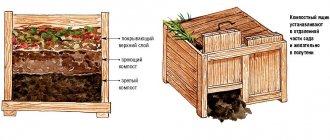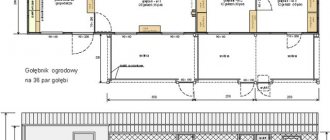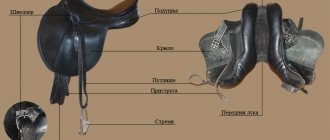The classic apiary occupies a large space. Pavilions for bees can significantly reduce the location of hives, located vertically in several rows.
You can make budget versions of such structures (both mobile and stationary) yourself. To do this, you should draw up a drawing with exact measurements, stock up on the necessary materials and strictly follow the construction plan.
Important! For pavilion beekeeping, special breeds of Carpathian and black bees are used. Insects are characterized by calmness, friendliness, and ability to survive in confined spaces.
Features of the pavilion
Product Features
Thanks to them, it is possible to achieve improvements in the following indicators:
- high bribes due to movement to places of large concentration of flowering honey plants;
- collecting various varieties of honey;
- simple pumping;
- saving space in the apiary;
- simple care of bee colonies, maintenance of the premises itself.
Advantages of keeping bees in pavilions
- Mobility . The mobile pavilion is easy to transport from one place to another.
- Space saving . The compact arrangement of the hives does not require a large area.
- Increased productivity . This is facilitated by the ability to transport hives to new honey-bearing places depending on the time of flowering of plants, which ultimately increases the volume of honey by 2 times compared to a regular apiary.
- Obtaining different types of honey . During the season, a mobile apiary is installed in several places, which gives this result.
- Ease of maintenance and security . The bee pavilion does not require additional work to insulate the hives before wintering. You can work in any climatic conditions. A cassette hive is lighter and smaller than a regular hive, so one person can handle its movement.
Insulation
For comfortable wintering of bees, it is necessary to take care of insulating their home. The insulation is laid between plywood walls. It is convenient to use foam or mineral wool as insulation. The cracks are foamed with polyurethane foam, or sealed with tape with insulation padding, so that all compartments will be warm.
In the summer, double walls will save you from overheating.
If you nevertheless decide to build a pavilion with your own hands, then it is better to complete its construction before the first spring inspection. Let it sit a little and air out. Bees do not like foreign odors (paint, polyurethane foam, etc.). And when you remove the hives, immediately move the bees to the pavilion.
The beekeeper's secret: bee packages in the apiary
Cassette pavilion
A cassette-type bee pavilion is extremely useful for its ability to carry out anti-varroa measures in the absence of brood, even in late autumn.
If a large pollination area is expected, then the best option for a pavilion is a design with compartments for 20-30 families, but if bees are kept in difficult climatic conditions, a pavilion for 15 families will be sufficient. And such an event can be carried out directly in the hive compartments.
The big advantage is that the hives do not need to be loaded and unloaded every time; they can be permanently stored in the pavilion.
Even the winter huts of bees are excellent in it, because when using ordinary hives you have to acquire special winter hives.
Also, such a pavilion has a beekeeper’s pantry, which provides storage of beekeeping equipment.
Caring for an apiary housed in such a structure is practically no different from maintaining hives under normal conditions.
In addition, this design is convenient when moving and installing in the area of honey plants.
How to make it yourself
Cassette pavilion “Berendey”
The beekeeper, regardless of his experience, is thinking about making a pavilion for bees with his own hands. The solution will make his work easier and will provide an opportunity to increase the productivity of the apiary. Initially, stationary buildings were created. Today, old vans and trailers are actively used. The solution significantly increases the level of honey yield of individual apiaries and industrial production.
Regardless of whether the pavilion is planned to be mobile or stationary, preference should be given to cassette ones. They can be installed permanently on site, mounted on a trailer, or retrofitted into an old van. But it is the cassette ones that make it possible to optimize the work of the beekeeper, minimizing the process of caring for the apiary as a whole and for each family at any time of the year.
Blueprints
All beekeepers know that the more a worker bee flies around honey plants, the higher the bribes will be. Therefore, it is beneficial to have mobile pavilions. They can be mounted on a car trailer and transported from one flowering field to another. The presented drawings will give more insight into how to implement the idea.
After creating the drawing, you can begin the main work. It is better to do it in such a way that there is a passage in the center and enough height. This will make it easier for the owner to care for bees and hives. He must move freely inside with the honey extractor in his hands, which means the passage width is at least 90 cm.
Decor
Wanting to create ideal conditions for families, the beekeeper must be patient, have the desire and the necessary tools. There are not many drawings on the Internet, so you can use the drawings of the Berendey pavilion as a basis and reproduce it yourself.
- Level the trailer and secure it in place.
- Dismantle the sides and floor.
- Lower the level of the passage between the hives slightly.
- Weld the metal base and secure it.
- Attach the bars to the frame and fill the boards.
- Cover with USB or fiberboard panels.
- Cover the roof with roofing felt.
- Design the doorway, hatches.
- Leave a gap around the perimeter of the floor and place the hive as close to the frame as possible.
- Make ventilation hatches in the ceiling.
Rules for organizing and placing an apiary
The lighting system should be thought out at the drawing stage.
Beekeeper's closet
The beekeeper has to stay near his apiary for a long time and move with it. Often the owner accompanies families throughout the season. He needs proper rest and a point to realize the harvest. Therefore, it is necessary to provide such places in this building. This is ideally thought out in the Berendey model. Even with minimal dimensions, there is enough space for everyone.
The beekeeper's area is located at the front or end of the trailer so as not to place additional load on the trailer axle.
Insulation
The wall and floor are made double to fill the space with insulation. This solution will help save the apiary from overheating in the summer and ensure optimal conditions in the winter. If you use OSB panels, then you don’t have to think through the insulation. They already have a layer of insulation inside.
Mobile pavilion for bees
Beekeepers build a mobile installation for working with bees to move bee families and change apiary locations.
In the process of building a stationary pavilion for bees, you need to decide on the number of sections. Experts recommend limiting yourself to 20 sections, because if there are more, the insects will interfere with each other.
In one season, a mobile pavilion can be installed in several places where honey plants bloom at different times. It must be said that the advantages of such a design as a bee pavilion outweigh all its possible disadvantages.
Also, if the pavilion is placed in a van or trailer, the disadvantage may be that it is cramped and the conditions in which it is not very convenient to work.
Before the onset of cold weather, the bee pavilion must be thoroughly insulated. Experts recommend using building insulation materials, creating an additional layer of them. In addition, it is necessary to close all the cracks to protect the apiary from draft winds. Thus, beekeepers receive several advantages at once, among which the main ones are:
- increasing the volume of honey produced;
- variety of varieties.
Internal device
Equipped at their own discretion, taking into account the basic conditions necessary for comfortable work:
- hives are installed in 2 or 3 floors on the sides of the van;
- there must be a passage between the rows that will allow bee colonies to be served;
- space is left between the hives so that frames can be stored;
- a room is equipped in which the beekeeper spends his working and free time.
- In such pavilions, bees can spend winters peacefully - no additional investments will be required for the construction of winter quarters.
DIY assembly
This is what the design proposed by G. Yakovlev looks like, like “Berendey”:
There are other models too. For example, you can assemble a cassette hive with your own hands as follows:
- Calculate the dimensions for a case for 4 cassettes, each containing 8 Dadan frames, taking into account the “bee space”.
- From the timber, assemble a frame base for each part - for the walls (2 sidewalls, front and rear wall-door), ceiling and bottom.
The example given is one of the simplest models that can be assembled even by beginners in carpentry. The maximum size of this design accommodates 9 cassettes for Dadan or Rutov frames - and has a height of 290 or 227 centimeters, respectively.
Moreover, if desired, you can regulate this moment. It is enough to remove or insert into special grooves the ceiling - a piece of plywood that divides the space of the house vertically. And if you divide the cassettes with a grid, you get a traditional hive - there is a nest at the bottom, and honey frames at the top.
There is complete freedom in design, where everything depends on the wishes of the beekeeper. You can assemble a cabinet with cassettes for a Dadan or Rutov frame (435 by 300 or 435 by 230 mm). Make half-cassettes that can accommodate half-frames with dimensions of 435 by 145 mm. Reorient the design to narrow, high hundred frames.
The cabinet itself can accommodate any number of cassettes - two, three, four. Each cassette box can contain a convenient number of frames for the beekeeper - 8, 10, 12 or more.
The main thing is not to overly burden the structure - to observe the measure when choosing dimensions, because the hives will have to be rearranged at least occasionally (for example, when moving or re-arranging houses at a point).
Another important point is maintaining the so-called “bee space”. A 10 mm gap is left between adjacent cassettes, as well as the drawers and walls themselves! If you leave a gap larger than 10 mm, the bees will begin to pull the honeycombs here. And with a distance of less than 6 mm, they firmly clog all the gaps with propolis - removing the cassettes becomes problematic.
If desired, you can build a solid structure for several bee colonies at once. The cabinet will have two or three vertical sections, each of which has several cassettes installed. This assembly technique is exactly used for pavilions.
Life cycle of worker bees and their purpose
Ventilation in the pavilion for bees
Natural ventilation from spring to autumn is provided by ventilation through windows and doors. In winter, a lot of dampness accumulates inside and around the cassette modules. Humidity increases greatly in stationary houses on strip foundations.
The first important rule for keeping bees is the presence of high-quality heating and ventilation inside the pavilion. In winter, death is detected by inspection. If a good microclimate is maintained inside the pavilion, the bees practically do not die. Feeding is carried out through feeders.
It is convenient to make glass windows or hatches above the passage in the roof to create natural light. The same windows should be provided in the cabins. Artificial lighting can be made using batteries, transformers or using solar panels
They are attached to the doors of cassette modules. The amount of feed is checked by inspection through the transparent wall of the feeder. In February, Kandy is used for feeding. To prevent the food from drying out, it is covered with film on top.
Based on reasonable considerations, it is better to install non-mobile buildings on columnar or pile foundations. Additionally, supply and exhaust ducts with adjustable dampers are equipped.
Natural ventilation is arranged so that in winter moisture escapes along with stale air, and heat is retained in the modules.
It’s good if the beekeeper’s cabin has two exits – one outside, the other into the room with the hives. In the second case, doors on hinges are inconvenient; it is better to make them sliding, or to separate the compartments with a curtain. The living compartment should have a place to work, a table for printing honeycombs, and lockers.
Design idea
Pavilions for bees, both mobile and stationary, help not only save time and space in the apiary, but also increase productivity, simplify preparation for wintering and make it easier to keep bees in the apiary.
Mobile pavilion in a truck trailer
The mobile pavilion , moreover, has mobility - it can easily be moved to flowering areas of nectar collectors at the desired period. Most often, such a mobile pavilion is made by hand in trailers or truck vans, adjusting the design drawings to its size.
A stationary pavilion for bees is not so mobile , it is not placed on wheels, and is most often installed for a long time in a specific apiary. Its purpose is to save apiary space and make it easier to maintain bee colonies.
Bee nosematosis - prevention and treatment
Stationary pavilion in Germany
Mobile cassette pavilions are especially popular among beekeepers . When constructing a pavilion with your own hands, it is necessary to take into account the main parametric features of the vehicle that will serve as a tractor for the structure. The cassette pavilion must “fit” into the van in such a way that there is easy access to all hives, and that there is a workplace for the beekeeper, a small closet for work.
A cassette pavilion is a structure similar to a chest of drawers - each hive is located in a separate cabinet, which is independent from the others. Keeping bees is simplified - it is easier for the beekeeper to carry out anti-varroa measures if there is no brood, even late in the fall. In addition, this design for bees can be easily moved to the territory of honey plants. Moreover, the beekeeper can do this alone - and he will not need either a smoker or a face mask. With the usual keeping of bees in hives, moving them is always a long and labor-intensive process.
Advantages and disadvantages
Throughout this topic, the benefits are clearly visible. But there are no shortcomings. They are available, although not so many.
- The hives in the pavilions are located close, almost close to each other. Bees can confuse houses.
- Almost the entire structure is assembled from flammable materials. In a dangerous situation, all this flares up and burns out instantly. It will not be possible to save the bees. Chemicals repel bees.
Most modern beekeepers strive to optimize their business to reduce costs. This takes beekeeping to a new, higher level.











